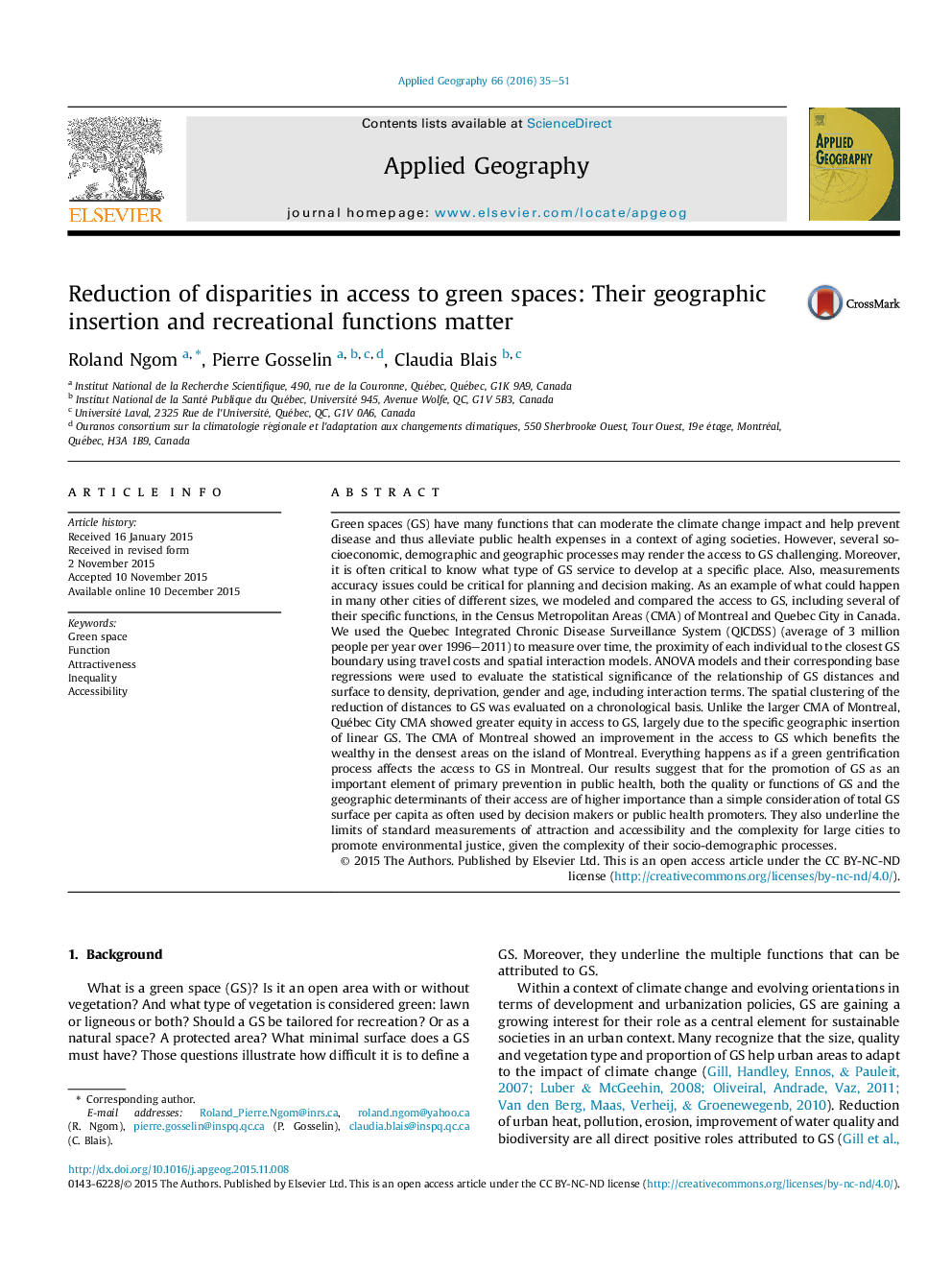| Article ID | Journal | Published Year | Pages | File Type |
|---|---|---|---|---|
| 6538416 | Applied Geography | 2016 | 17 Pages |
Abstract
Green spaces (GS) have many functions that can moderate the climate change impact and help prevent disease and thus alleviate public health expenses in a context of aging societies. However, several socioeconomic, demographic and geographic processes may render the access to GS challenging. Moreover, it is often critical to know what type of GS service to develop at a specific place. Also, measurements accuracy issues could be critical for planning and decision making. As an example of what could happen in many other cities of different sizes, we modeled and compared the access to GS, including several of their specific functions, in the Census Metropolitan Areas (CMA) of Montreal and Quebec City in Canada. We used the Quebec Integrated Chronic Disease Surveillance System (QICDSS) (average of 3 million people per year over 1996-2011) to measure over time, the proximity of each individual to the closest GS boundary using travel costs and spatial interaction models. ANOVA models and their corresponding base regressions were used to evaluate the statistical significance of the relationship of GS distances and surface to density, deprivation, gender and age, including interaction terms. The spatial clustering of the reduction of distances to GS was evaluated on a chronological basis. Unlike the larger CMA of Montreal, Québec City CMA showed greater equity in access to GS, largely due to the specific geographic insertion of linear GS. The CMA of Montreal showed an improvement in the access to GS which benefits the wealthy in the densest areas on the island of Montreal. Everything happens as if a green gentrification process affects the access to GS in Montreal. Our results suggest that for the promotion of GS as an important element of primary prevention in public health, both the quality or functions of GS and the geographic determinants of their access are of higher importance than a simple consideration of total GS surface per capita as often used by decision makers or public health promoters. They also underline the limits of standard measurements of attraction and accessibility and the complexity for large cities to promote environmental justice, given the complexity of their socio-demographic processes.
Related Topics
Life Sciences
Agricultural and Biological Sciences
Forestry
Authors
Roland Ngom, Pierre Gosselin, Claudia Blais,
